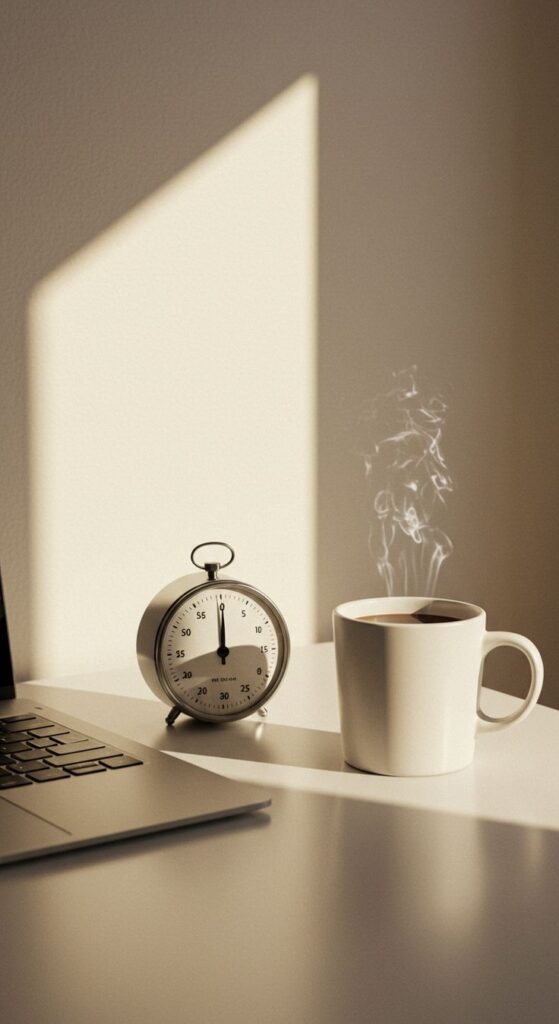Lighting often takes a backseat when businesses design their office spaces, but it’s among the most critical elements influencing employee morale, productivity, and overall well-being. From boosting energy levels to reducing eye strain, the type and quality of lighting can make or break an office environment. This blog delves into how lighting impacts employees and what businesses can do to create a more conducive workspace.

Photo by Tim van der Kuip on Unsplash
The Science Behind Lighting and Productivity
Human bodies operate on a circadian rhythm, a natural 24-hour cycle that regulates sleep and wakefulness. This rhythm is heavily influenced by light exposure. Bright, natural light during the day helps employees feel awake and focused, while dim or artificial lighting can disrupt this cycle, causing fatigue and decreased productivity.
Lighting also affects the production of serotonin and melatonin. Proper exposure to light during the day enhances serotonin production, improving mood and focus. On the other hand, inadequate lighting can lead to lethargy and even symptoms of depression, commonly referred to as Seasonal Affective Disorder (SAD).
Seasonal Affective Disorder (SAD) is a type of depression triggered by changes in seasonal light levels, typically occurring during the fall and winter months when daylight is reduced. Employees experiencing SAD often report feelings of fatigue, low energy, difficulty concentrating, and a lack of motivation, all of which can significantly impact workplace performance. These symptoms may intensify in poorly lit office environments, as the lack of adequate lighting exacerbates the body’s reduced serotonin production and disrupts the circadian rhythm. Employers who address SAD proactively by incorporating bright, natural light or circadian-friendly artificial lighting in the office can help alleviate these symptoms, improving employee well-being and productivity during darker months.
How Poor Lighting Harms Morale and Performance
Eye Strain and Fatigue: Inadequate lighting forces employees to strain their eyes, leading to headaches, blurred vision, and discomfort. This physical toll reduces productivity and increases the likelihood of mistakes.
Mood Suppression: Dim or flickering lighting can make the workspace feel dreary and uninspiring. Employees in such environments often report lower morale and motivation.
Increased Absenteeism: Prolonged exposure to poor lighting conditions can cause health issues, leading to more sick days and reduced engagement.
Inefficiency: Improper lighting makes it difficult to focus on tasks, especially those requiring attention to detail, such as reading or working with digital screens.
The Benefits of Good Office Lighting
Enhanced Productivity: Bright, natural light improves alertness and helps employees maintain energy throughout the day.
Improved Mood: A well-lit space boosts employee morale and fosters a positive work environment, reducing stress and increasing job satisfaction.
Better Collaboration: Bright, welcoming spaces encourage communication and teamwork, as employees feel more comfortable and engaged.
Energy Savings: Modern lighting solutions, such as LED lights, enhance the workspace and lower energy costs, benefiting the company’s bottom line.
Best Practices for Optimizing Office Lighting


Maximize Natural Light: Arrange desks near windows and use open floor plans to allow daylight to reach as many areas as possible.
Use Task Lighting: Provide adjustable desk lamps for employees, especially for tasks requiring focus, such as paperwork or graphic design.
Invest in Quality Artificial Lighting: Use LED lights that mimic natural light and avoid fluorescent lighting, which often causes glare and flickering.
Control Glare: Install blinds or shades on windows to manage excessive sunlight. Anti-glare screens on computers can also help.
Customize Lighting: Offer employees the ability to adjust their workstation lighting to their preferences.
Incorporate Circadian Lighting: Advanced lighting systems adjust color temperature throughout the day to align with natural circadian rhythms, promoting alertness in the morning and relaxation in the evening.
Real-World Examples
Google’s Offices: Known for its innovative workspace designs, Google incorporates abundant natural light, adjustable LED systems, and creative lighting features to inspire employees.
The WELL Building Standard: Many companies now adopt lighting systems that meet this standard, prioritizing health and well-being by incorporating circadian-friendly lighting.

Photo by Domenico Loia on Unsplash
Final Thoughts
Office lighting is more than just a design choice—it’s a crucial element that directly impacts employees’ mental and physical health, morale, and productivity. By investing in thoughtful lighting solutions, companies can foster a workplace where employees thrive, collaboration flourishes, and productivity soars.
Evaluating and optimizing your office lighting may be one of the simplest yet most effective steps to creating a happier, healthier, and more productive workforce.
- 0shares
- Facebook0
- Pinterest0
- Twitter0



